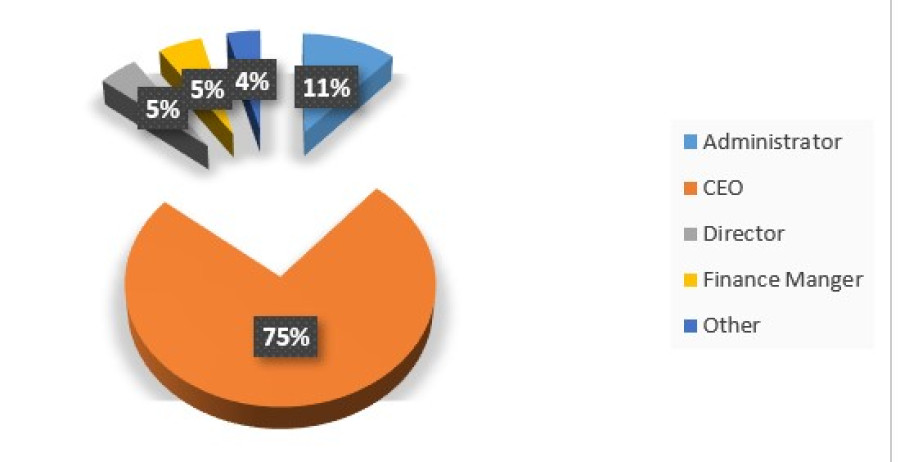In a digital environment increasingly driven by attention
metrics and short consumer attention spans, video campaigns have emerged as a
dominant force in marketing. Yet, while many brands invest heavily in video
production, only a few crack the code to deliver truly high-converting video
campaigns. These top-performing campaigns aren’t simply the product of high
budgets or celebrity cameos—they are the result of meticulously layered
strategy, human psychology, data science, and emotional resonance.
This article explores the elements that define the
best-performing video campaigns in the business. From storytelling frameworks
to advanced targeting strategies, and from the subtle power of user-generated
content to the technical nuances of optimization, the real “secret sauce” lies
in understanding and combining these ingredients with precision. Here's what
the best in the game are doing differently—and why it’s paying off.
Understanding
the Psychology of Visual Engagement
The foundation of any high-converting video campaign lies in
its ability to capture attention and drive an emotional connection.
Neuroscience and behavioral psychology provide ample evidence that visual
storytelling engages more parts of the brain than text or static images. When
audiences see people, emotions, and stories unfold in motion, they tend to
retain information more effectively and form stronger associations with the
message being conveyed. This psychological response to video isn't
accidental—it is rooted in our cognitive wiring, which evolved to favor
dynamic, emotionally resonant narratives.
Moreover, high-performing campaigns lean heavily into
cognitive triggers like curiosity, urgency, and social proof. Curiosity hooks
are often embedded within the first three seconds of a video, piquing interest
before the audience has a chance to scroll away. Urgency, often conveyed
through limited-time offers or countdowns, prompts quicker decision-making.
Social proof, such as testimonials or user stories, helps viewers feel
validated in their interest. These elements may seem simple, but their
orchestration is anything but casual—it requires exploring behavioral patterns
and emotional incentives.
Finally, the psychology of trust cannot be overlooked. With
growing skepticism toward polished, overly scripted advertising, audiences
respond more favorably to content that feels authentic and human. This is why
brands increasingly prioritize real stories and customer experiences over
rehearsed pitches. It is also why formats that spotlight genuine customer
voices and behind-the-scenes perspectives see higher levels of engagement and,
more importantly, conversion.
The Role of
Storytelling in Performance Marketing
High-converting video campaigns are built on narratives that
are both structured and emotionally resonant. Successful marketers understand
that people are not persuaded by data points alone; they are influenced by
stories that reflect their own struggles, aspirations, and values. A compelling
story serves as the backbone of a campaign, transforming a brand message from
an impersonal pitch into a relatable, human experience.
Effective storytelling often follows a familiar arc: a
protagonist (the customer), a challenge or obstacle (their pain point), and a
resolution (the product or service offered). This simple but powerful structure
helps the viewer place themselves in the scenario being presented, imagining
how their own lives might improve with the brand’s help. The emotional payoff
comes when the resolution satisfies not just a need, but a deeper desire for
transformation or empowerment.
Yet storytelling alone is not enough. The timing, pacing, and
visual language of the video must also support the narrative. High-performing
campaigns employ cinematographic techniques—like close-up shots to evoke
intimacy, or pacing shifts to maintain interest—that make the story more
immersive. When executed skillfully, these visual storytelling techniques do
more than convey information—they create an experience that lingers in the
viewer’s mind, increasing the likelihood of action.
Leveraging the
Power of Authentic Content
In a media ecosystem saturated with advertisements,
authenticity has become the currency of trust. Consumers today are savvier than
ever, and they instinctively filter out content that feels overly promotional
or disconnected from their reality. This is why brands that lean into authentic
content formats, especially those created by real users, are seeing a
noticeable uptick in engagement and conversion rates.
User-generated content (UGC) is at the forefront of this
authenticity wave. When actual customers share their experiences with a product
in their own voice and style, the resulting content is inherently more
believable. It strips away the polish of traditional marketing and presents the
brand in a way that is raw, relatable, and credible. As a result, many brands
are integrating UGC into their core video strategy—not just as a supplementary
asset, but as a centerpiece. This shift has reshaped how teams think about
content production, with UGC videos increasingly positioned as
high-converting assets within performance marketing frameworks.
Additionally, UGC aligns perfectly with the psychology of
social proof. Viewers are more likely to trust the judgment of their peers than
the claims made by a brand itself. This dynamic becomes even more potent when
the content includes reviews, demonstrations, or storytelling that mirrors the
viewer’s own situation. By spotlighting everyday voices, brands build a bridge
of familiarity and trust that no amount of slick production can replicate.
Finally, the use of authentic content often results in better
performance on social platforms and digital ad channels. Algorithms favor
content that garners genuine engagement, and viewers are more inclined to share
content that feels real. As such, UGC doesn't just convert better—it extends
the reach and lifespan of a campaign through organic amplification. This compounds
its value, making it one of the most cost-effective tools in the
high-conversion marketer’s arsenal.
Optimizing for
Mobile-First Consumption
More than 75% of video content is consumed on mobile devices,
yet many campaigns are still designed primarily with desktop viewing in mind.
High-converting video campaigns take a mobile-first approach from the ground
up, tailoring everything from aspect ratio to pacing for the constraints and
opportunities of a smaller screen. This design philosophy is not just about
format—it’s about adapting to user behavior in a mobile-dominated environment.
Vertical video formats, for instance, now outperform
traditional horizontal layouts in many key metrics, particularly on social
platforms like Instagram, TikTok, and YouTube Shorts. These formats fill the
screen entirely and feel more immersive, reducing distractions and enhancing
viewer focus. Moreover, successful mobile campaigns front-load their value
proposition—placing the most impactful visuals and hooks in the opening
seconds—because mobile users are quicker to scroll away if their interest isn’t
immediately captured.
Additionally, subtitling and captioning are essential for
mobile optimization. Many users consume video with the sound off, especially in
public or professional settings. High-converting campaigns plan for this
reality by designing videos that are visually coherent and meaningful even in
silence. Text overlays, graphical storytelling, and strategic use of motion all
contribute to a richer experience for mobile viewers. These adjustments may
seem subtle, but they significantly improve watch time and engagement, which
are strong predictors of conversion.
Data-Driven
Targeting and Personalization
The effectiveness of any video campaign is amplified by
precision targeting and personalization. Gone are the days when a single video
could serve all segments of a brand’s audience equally well. Today’s
highest-converting campaigns are those that segment their messaging, visuals,
and calls to action based on granular audience data. This approach ensures that
each viewer sees a version of the message that feels tailor-made for them.
Advanced targeting relies heavily on behavioral data,
demographic insights, and contextual cues. Marketers use tools like customer
data platforms (CDPs) and machine learning algorithms to identify not just who
their audience is, but what kind of content they are most likely to engage
with. These insights guide decisions around tone, duration, platform selection,
and even the emotional tenor of the narrative. A viewer who has previously
interacted with a product page may be served a video that addresses objections,
while a new lead might see a more general brand story.
Personalization extends beyond audience segmentation—it also
plays out in creative execution. Dynamic video ads that adapt based on viewer
profiles are becoming increasingly common, particularly in retargeting
campaigns. For instance, a user who abandoned a cart might see a video that
includes the exact product they were considering, alongside user reviews for
added reassurance. This level of customization transforms a generic message
into a conversation, which dramatically boosts conversion potential.
Strategic Use
of Calls to Action
A video may entertain, inform, or inspire—but unless it
drives the viewer to take a specific action, it cannot be deemed a success in
performance marketing. High-converting campaigns treat the call to action (CTA)
as more than a closing statement; they integrate it strategically throughout
the video. CTAs may be verbal, visual, or even interactive, but in every case,
they are clear, compelling, and contextually relevant.
One hallmark of an effective CTA is clarity. Viewers must
instantly understand what they are being asked to do and why it matters. Vague
prompts like “Learn More” or “Check Us Out” are less effective than specific
actions tied to a benefit, such as “Start Your Free Trial Now” or “See How It
Works in Under 60 Seconds.” Clarity removes friction, which is a critical
factor in converting passive interest into action.
Timing also plays a critical role. In many high-performing
campaigns, the CTA is not reserved for the end but introduced subtly throughout
the video. This method, sometimes referred to as the "CTA sandwich,"
places soft prompts early and mid-way through the video, then reinforces them
at the end. This increases the chances that a viewer, regardless of when they
choose to stop watching, encounters the CTA at least once. It’s a small shift
in strategy, but one that can yield disproportionate gains in conversion
metrics.
Continuous
Testing and Creative Iteration
Even the best video concept is only a hypothesis until proven
in the market. The final, essential ingredient in the secret sauce of
high-converting campaigns is a culture of testing and iteration. Rather than
relying on assumptions, top-performing marketers use A/B testing, multivariate
analysis, and performance analytics to identify what works and what
doesn’t—then adjust accordingly in real time.
This process begins with testing creative elements such as
thumbnails, openings, CTA phrasing, and even music or voiceover tone. Each
variable can have a measurable impact on viewer behavior. For instance, one
thumbnail may drive a 30% higher click-through rate than another, while a
different voiceover style may increase watch time. By isolating these variables
and optimizing around real data, marketers gradually refine their videos to
maximize ROI.
Equally important is the feedback loop between performance
data and creative development. Campaigns are no longer static—they evolve.
Weekly or biweekly reviews of performance metrics allow teams to identify fatigue,
adjust pacing, and refresh content as needed. This agility turns video
marketing from a one-off expense into a compounding investment. The most
successful campaigns today are not the product of a single brilliant idea, but
of hundreds of iterative decisions, each one bringing the message closer to
conversion perfection.









